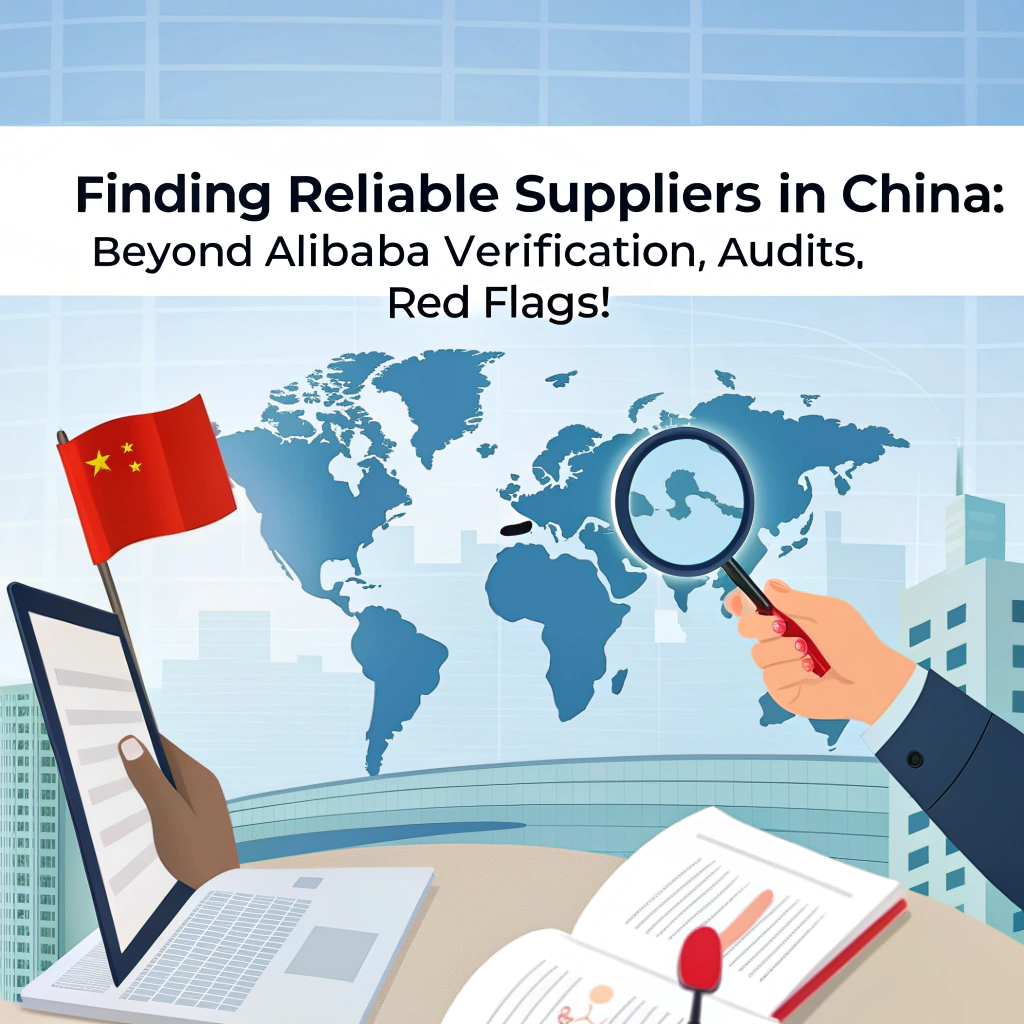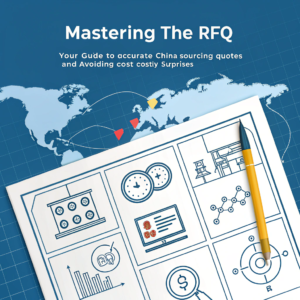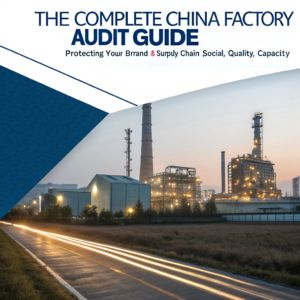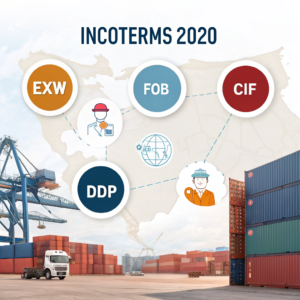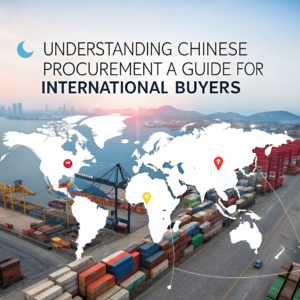Introduction
Sourcing quality products from reliable suppliers is a critical challenge for businesses looking to tap into the vast manufacturing capabilities of China. While platforms like Alibaba provide a convenient starting point, navigating the complexities of the Chinese supplier landscape requires a more strategic and thorough approach.
In this comprehensive blog post, we’ll explore the key steps and considerations for finding trustworthy suppliers in China, beyond the limitations of popular e-commerce marketplaces. From conducting comprehensive supplier verification and audits to identifying potential red flags, you’ll gain the knowledge and tools necessary to build a robust and sustainable supply chain from China.
Understanding the Chinese Supplier Landscape
China’s manufacturing prowess is unparalleled, offering businesses access to a wide range of products, materials, and services at competitive prices. However, the sheer scale and diversity of the Chinese supplier ecosystem also presents unique challenges. Factors such as language barriers, cultural differences, and varying quality standards can make it difficult for foreign buyers to navigate this landscape effectively.
One of the primary obstacles is the prevalence of unscrupulous or unreliable suppliers. The Chinese market is home to a mix of reputable, high-quality manufacturers as well as less-than-scrupulous operations looking to exploit unsuspecting buyers. Identifying the trustworthy suppliers from the dubious ones requires a multi-faceted approach that goes beyond the basic information available on platforms like Alibaba.
Moving Beyond Alibaba: Comprehensive Supplier Verification
While Alibaba and similar e-commerce marketplaces can serve as a starting point for your supplier search, relying solely on these platforms can expose your business to significant risks. To find truly reliable suppliers in China, you’ll need to conduct a more thorough vetting process that goes beyond the surface-level information provided on these platforms.
Company Background and Registration
Begin your supplier verification process by thoroughly researching the company’s background and legal registration status. Verify that the supplier is a legitimate, registered business entity in China by checking their business license, tax registration, and other relevant documentation. This step helps ensure that you’re dealing with a recognized and compliant organization, rather than a fly-by-night operation.
Production Capabilities and Capacity
Assess the supplier’s production capabilities and capacity to ensure they can meet your specific product requirements and order volumes. Request detailed information about their manufacturing facilities, equipment, workforce, and quality control processes. Consider visiting the supplier’s factory or arranging for a third-party audit to validate their claims and capabilities.
Financial Stability and Creditworthiness
Evaluate the supplier’s financial stability and creditworthiness to gauge their long-term viability and ability to fulfill your orders. Request financial statements, bank references, and credit reports to get a comprehensive understanding of their financial health and standing.
Industry Reputation and References
Conduct thorough research into the supplier’s industry reputation, customer references, and track record. Reach out to their existing or past clients to gather feedback on the supplier’s product quality, delivery reliability, and overall customer service. Online reviews and industry forums can also provide valuable insights.
Certifications and Compliance
Ensure that the supplier holds the necessary industry certifications, licenses, and compliance credentials relevant to your product or industry. This may include quality management (ISO 9001), environmental management (ISO 14001), or social responsibility (SA8000) certifications, among others.
By thoroughly vetting the supplier’s background, capabilities, financials, and industry standing, you can build a comprehensive understanding of their reliability and trustworthiness, going beyond the limited information available on e-commerce platforms.
Conducting Supplier Audits
Once you’ve completed the initial supplier verification process, the next step is to conduct on-site audits to validate the supplier’s claims and assess their operational capabilities firsthand. Supplier audits can take various forms, depending on the specific needs and requirements of your business.
Factory Inspections
Arrange for in-person visits to the supplier’s manufacturing facilities to inspect the production environment, equipment, and overall operations. During these factory inspections, pay close attention to factors such as:
- Cleanliness and organization of the production areas
- Condition and maintenance of machinery and equipment
- Worker safety protocols and personal protective equipment (PPE) usage
- Quality control measures and processes
- Inventory management and storage practices
Product Sampling and Testing
Request samples of the products you intend to source and subject them to rigorous testing and inspection. This may include:
- Verifying product specifications and dimensions
- Assessing material quality and composition
- Evaluating product performance and durability
- Checking for any defects or quality issues
Social Compliance Audits
Evaluate the supplier’s adherence to social responsibility and labor standards, such as those outlined in the SA8000 certification. This may involve:
- Reviewing worker contracts and compensation records
- Assessing working hours, overtime policies, and leave entitlements
- Inspecting living conditions for workers (if applicable)
- Ensuring the absence of child labor or forced labor practices
Environmental Compliance Audits
Assess the supplier’s environmental management practices and compliance with relevant regulations, including:
- Waste disposal and treatment methods
- Energy consumption and efficiency measures
- Emissions control and pollution prevention
- Adherence to environmental protection laws and standards
By conducting comprehensive on-site audits, you can validate the supplier’s capabilities, identify potential areas of concern, and make informed decisions about their suitability as a long-term partner.
Identifying Red Flags and Mitigating Risks
Even after thorough supplier verification and auditing, it’s essential to remain vigilant and continuously monitor for potential red flags that could indicate underlying issues or risks. Some common red flags to watch out for include:
Inconsistent or Evasive Communication
Suppliers that are slow to respond, provide vague or contradictory information, or are reluctant to share details about their operations may be hiding something. Consistent, transparent, and timely communication is a hallmark of a reliable supplier.
Sudden Changes in Pricing or Minimum Order Quantities
Significant and unexplained fluctuations in pricing or sudden increases in minimum order quantities can be a sign of financial instability or an attempt to exploit the buyer.
Lack of Certifications or Compliance Documentation
Reputable suppliers should be able to provide a comprehensive set of industry certifications, licenses, and compliance documents. The absence of these credentials may indicate substandard operations or a lack of commitment to quality and safety standards.
Poor or Inconsistent Product Quality
Receiving products that do not meet the agreed-upon specifications or vary significantly in quality from one order to the next can be a red flag. Consistent product quality is a critical indicator of a supplier’s capabilities and reliability.
Delayed or Unreliable Delivery
Chronic delays in order fulfillment, missed delivery deadlines, or frequent shipment issues may point to production or logistical challenges that could disrupt your supply chain.
Resistance to Onsite Audits or Inspections
Suppliers that are unwilling to accommodate factory visits, product inspections, or social/environmental audits may be trying to hide something from potential buyers.
By proactively identifying and addressing these red flags, you can mitigate the risks associated with working with unreliable suppliers and safeguard the integrity of your supply chain.
Cultivating Long-Term Supplier Relationships
Building a successful and sustainable supply chain from China requires more than just finding reliable suppliers – it also involves cultivating long-term, mutually beneficial relationships. By investing in these partnerships, you can enjoy greater stability, flexibility, and cost-effectiveness in your sourcing operations.
Fostering Open Communication and Transparency
Encourage open and transparent communication with your suppliers, regularly sharing information, and addressing any concerns or issues that arise. This helps to build trust, foster collaboration, and ensure that both parties are aligned on expectations and goals.
Providing Feedback and Continuous Improvement
Offer constructive feedback to your suppliers, highlighting areas for improvement and collaborating on ways to enhance their processes and performance. This collaborative approach can help drive continuous improvement and strengthen the partnership over time.
Offering Incentives and Loyalty Programs
Consider implementing incentive programs or loyalty schemes that reward your suppliers for their consistent performance, reliability, and commitment to your business. This can include volume-based discounts, extended payment terms, or even joint product development opportunities.
Diversifying Your Supplier Base
While cultivating strong relationships with your core suppliers is important, it’s also wise to maintain a diversified supplier base. This helps mitigate the risks associated with over-reliance on a single supplier and provides greater flexibility in your sourcing strategy.
By taking a strategic and proactive approach to supplier management, you can build a robust and resilient supply chain from China that supports the long-term growth and success of your business.
Conclusion
Navigating the complexities of the Chinese supplier landscape can be a daunting task, but with the right strategies and due diligence, you can successfully identify and partner with reliable manufacturers that can help drive your business forward.
By moving beyond the limitations of e-commerce marketplaces, conducting comprehensive supplier verification and audits, and vigilantly monitoring for red flags, you can build a supply chain that is not only cost-effective but also sustainable, flexible, and resilient. Cultivating long-term supplier relationships based on trust, transparency, and continuous improvement will further strengthen your position and enable you to capitalize on the immense manufacturing capabilities that China has to offer.
Investing the time and resources to find the right suppliers in China can pay dividends in the form of higher-quality products, improved delivery reliability, and greater overall supply chain efficiency. Embrace the challenge, and unlock the full potential of China’s manufacturing prowess for your business.

